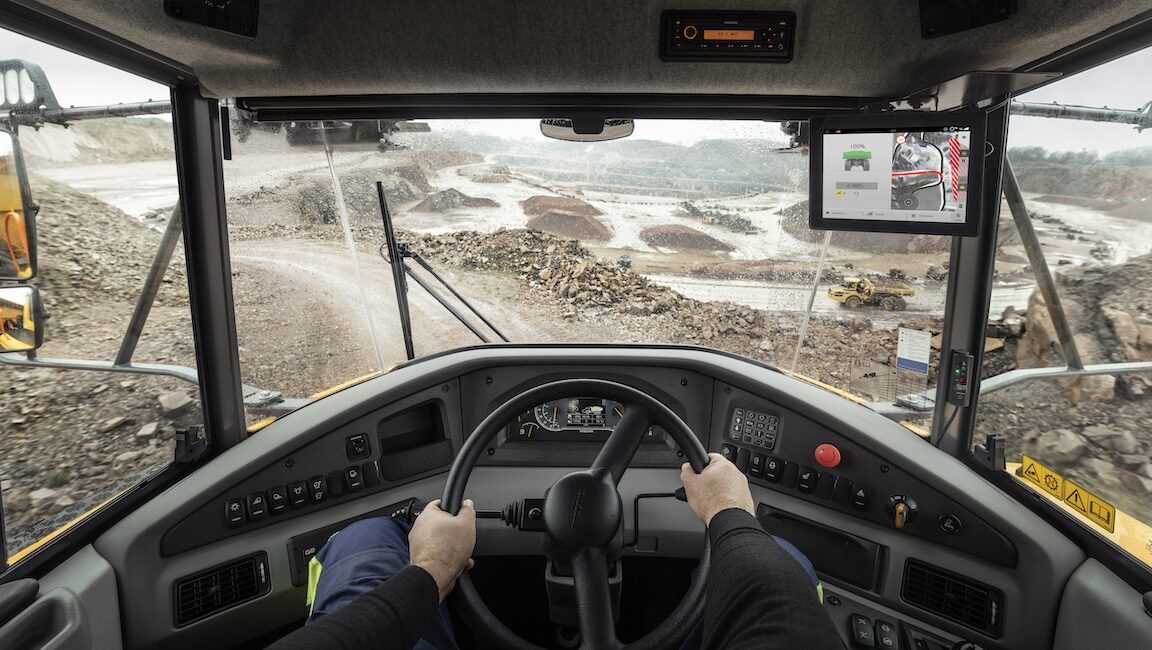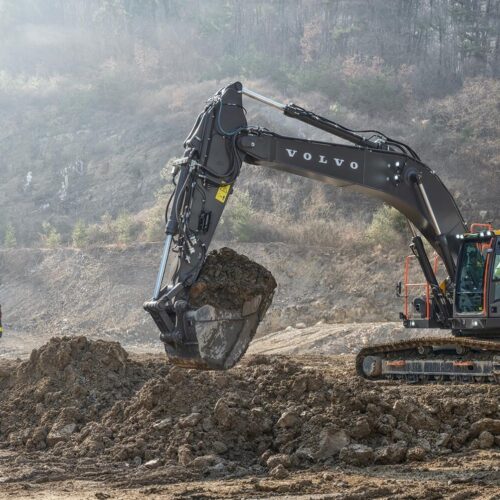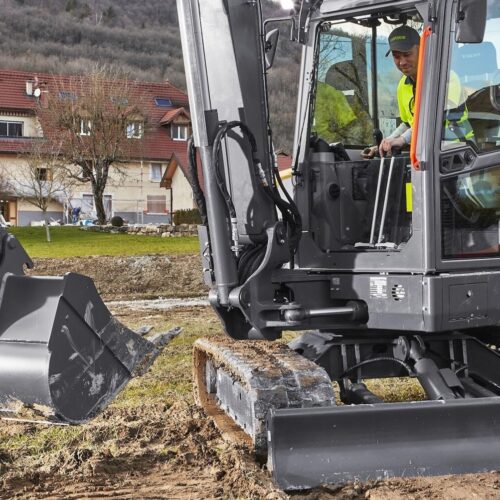The potential of machine control in heavy construction equipment
In the construction and mining industries, profit margins can be razor thin — efficiency and precision are oftentimes the difference between a great month and one you’d rather forget. This […]


In the construction and mining industries, profit margins can be razor thin — efficiency and precision are oftentimes the difference between a great month and one you’d rather forget.
This is where machine control systems can be a difference maker. Even though they’re becoming much more common on jobsites, there are still misconceptions about what these systems do — and their full potential remains untapped in many applications. What is machine control and how does it benefit construction and mining operations? Let’s take a look.
WHAT MACHINE CONTROL IS — AND WHAT IT ISN’T
At its core, machine control is a suite of technologies designed to enhance the accuracy and efficiency of heavy equipment. Using GPS, sensors and other data, it guides operators during tasks to minimize errors and reduce manual adjustments. For example, grade control is a popular type of machine control system that, depending on the machine type, can give operators real-time data and a visual gauge on an in-cab display while digging to a specific depth.
It’s not, however, a one-size-fits-all solution or a replacement for human oversight. Rather, it’s a powerful tool that, when used correctly, complements the skill of heavy equipment operators, helping them achieve more precision in their work with less effort and time.
THE VERSATILE APPLICATIONS OF MACHINE CONTROL
Machine control technology has been integrated into a wide array of heavy machinery including excavators, loaders, compactors, haulers, dozers and graders, among others. Its applications are just as varied, offering significant benefits in:
- Accuracy: Achieving precise grading, excavation, load weights, pavement densities and more
- Efficiency: Completing tasks faster with less waste of materials
- Safety: Enhancing operator safety by providing better control and reducing the likelihood of accidents

If you’re looking for specific examples, heavy equipment machine control systems allow operators to:
- Dig a defined shape at a specific depth while reducing the need for rework.
- Hit precise target densities while compacting a new asphalt highway, earning companies their bonuses.
- Load trucks with the optimum amount of material to prevent inefficient underloading or unsafe overloading.
- Quickly and accurately dig a trench at a defined grade, direction and depth.
- Reduce the number of passes required for things like site prep, which allows operators to get the same amount of work done while reducing costly wear and tear.
Some systems can even optimize tire life by utilizing a tire pressure monitoring system, which allows an operator to check the condition of the tires from the cab.
IS MACHINE CONTROL RIGHT FOR YOU?
Some brands don’t offer machine control systems on their machines, so you’d need to find an aftermarket solution. Other manufacturers like Volvo offer a range of machine control systems for most models in a wide range of machine types.
Oftentimes the use of machine control technology is influenced by factors such as the scale of your projects, your budget and your readiness to embrace technology. Here are three tips to consider:
- Assess Your Needs: Do your operators spend time reworking their tasks, wasting valuable time? If you’re a road builder, are you missing target densities and missing out on your bonus? If so, in-cab operator assist programs can help you retake control of your profitability.
- Consider the Cost vs. Benefit: The cost will depend on the type of machine control system, its features, whether it’s factory-fitted or an aftermarket addition, and more. If the initial investment seems high, remember the potential savings in time and materials often justifies the expense. These systems can reduce or even eliminate rework, unnecessary wear and tear, excessive fuel consumption and more. They can also help you finish bids accurately and on time to collect your bonuses.
- Evaluate Your Workforce: Ensure your operators are prepared for a learning curve and consider whether you have the dealer or OEM support needed to train them on this new technology if they haven’t used it before.
MAXIMIZING THE BENEFITS OF MACHINE CONTROL
To get the most out of machine control, a proactive approach is key:
- Continuous Training: Invest in ongoing operator training as needed to keep them up to date with the latest features and best practices.
- Regular Maintenance: Keep the technology and equipment in top condition to ensure long-term accuracy and reliability.
- Stay Updated: Keep an eye on available updates to ensure your equipment remains at the cutting edge.

ADVANCEMENTS IN MACHINE CONTROL
Machine control technology is quickly advancing. Recent developments include enhanced data integration that allows for real-time adjustments on the fly, remote-control systems that take the operator out of the cab, and the rise of autonomous machines that can operate with little human intervention at all. Looking ahead, we anticipate further integration with artificial intelligence and machine learning, making construction sites smarter and even more efficient.
It’s important to remember that machine control is more than just a technological add-on — it’s a transformative tool that can significantly impact your business. By understanding these systems’ capabilities, applications and how to leverage them effectively, you can enhance your operational efficiency and set your business on a path to increased profitability.
If you haven’t yet tried a machine control system, you should. It’s by no means a leap of faith — it’s a small step that offers incredible potential for your operators. Visit the Volvo CE Productivity page on our website to see the range of machine control Assist programs we offer.
By Matthew McLean
Categories: Construction Equipment, Insights

